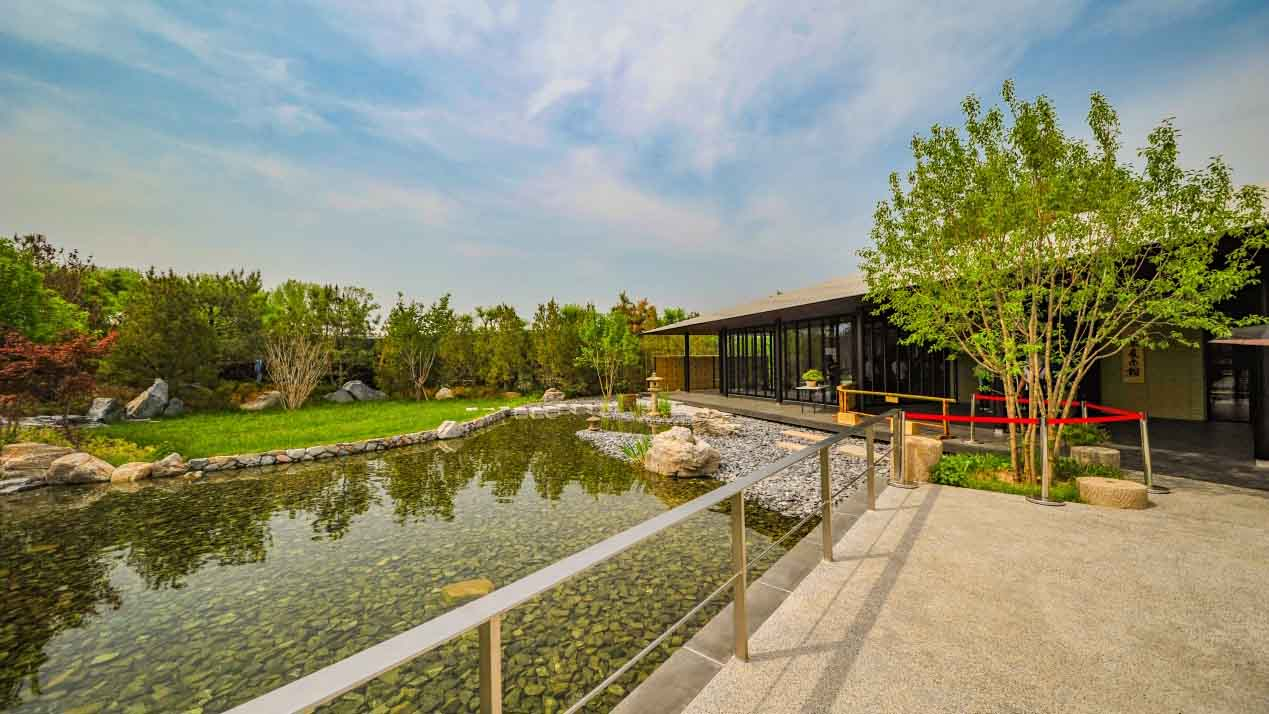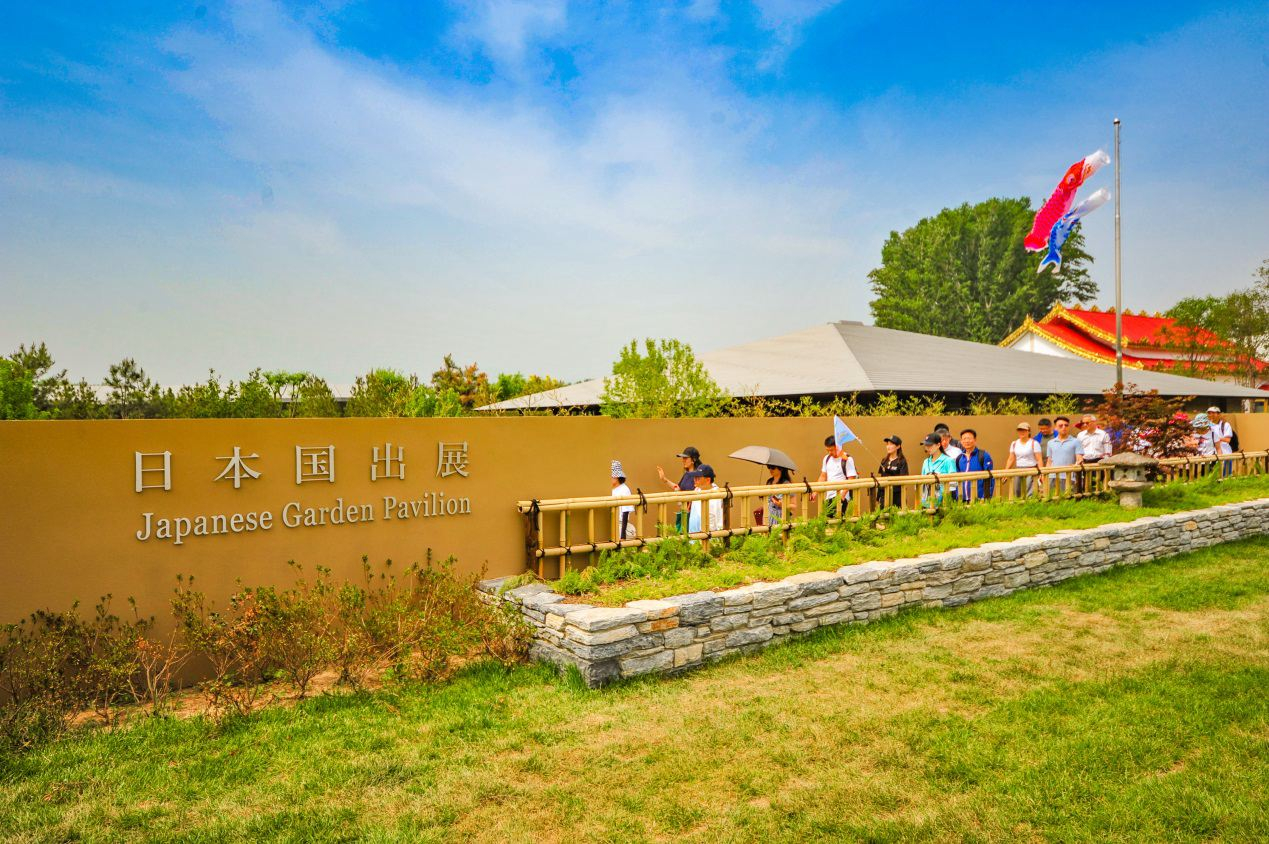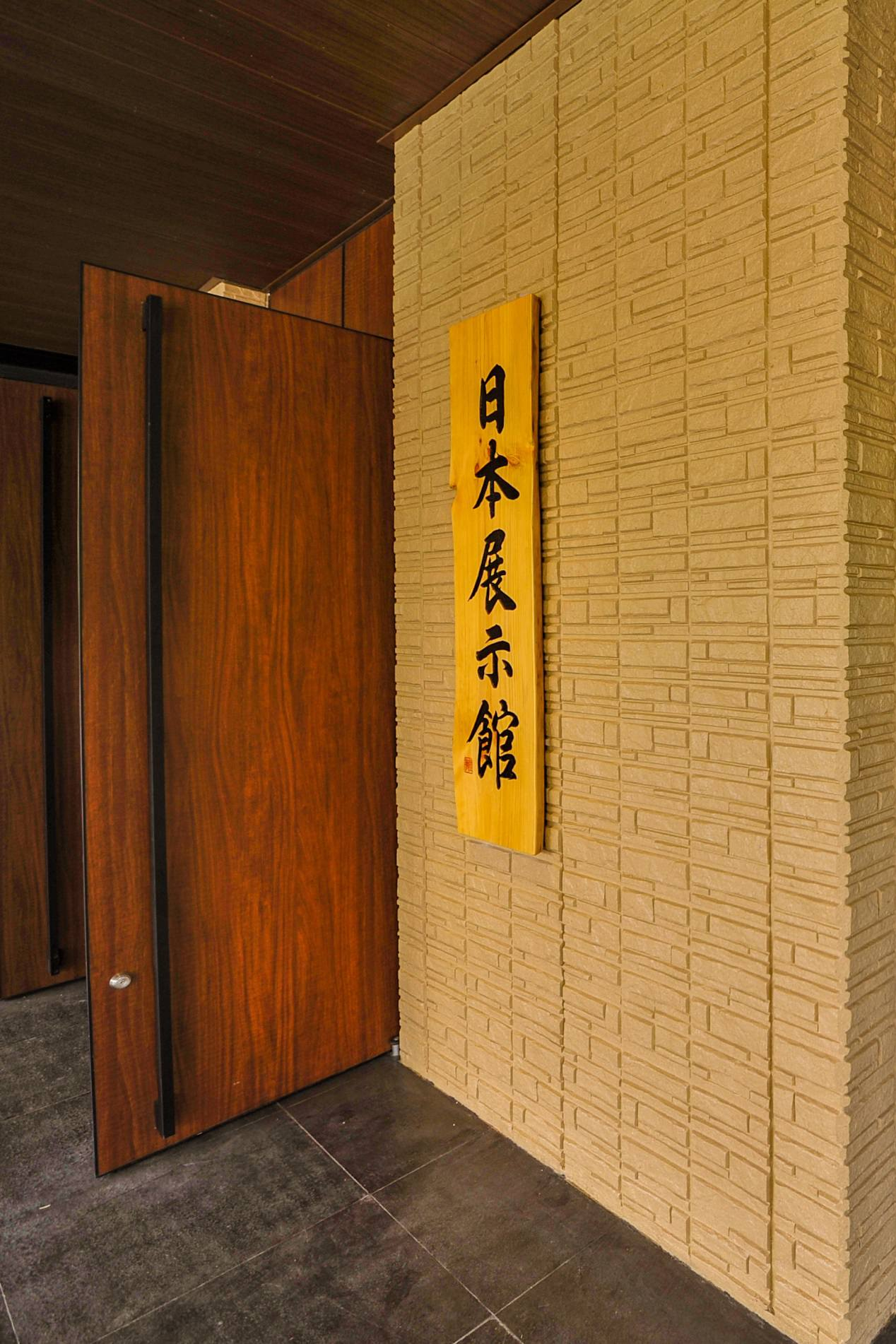

Japan's exquisite gardening arts and refined lifestyles make the Japanese Garden Pavilion a highlight for visitors at the Beijing International Horticultural Exhibition.
The first thing that catches the eyes of visitors is the Japanese style pond setting, with water flowing from mountains into a pond at the center of the garden.
These fancy carp are from Naga Oka, Japan, where this particular variety originates. They are delivered to Beijing by air.
Breeders have screened the fish specially for the most perfect body coloring when selecting them.

Japanese Garden Pavilion at the Beijing International Horticultural Exhibition. /VCG Photo
“There is a white carp with a red dot on the top of its head, representing the color of the Japanese flag. And we have another red one representing the color of the Chinese flag. All these carp showcase the friendship between China and Japan,” said Yama Gata, Head of Japanese Pavilion.
The philosophy behind the Japanese garden is to integrate nature into people's lifestyles.
A tea house is located at the eastern side. Traditional decorations such as stone lanterns and washbasins create a exquisite space for visitors.
The Japanese pavilion is a steel-framed-structure without a single pillar. Many seasonal floral art works are showcased here.

Japanese Garden Pavilion at the Beijing International Horticultural Exhibition. /VCG Photo
Different types of plants are brought into daily life in the form of bonsai, a unique Japanese cultural tradition passed down for generations.
“Our idea is to concentrate as many natural elements into a small bonsai. Visitors can see mountains, rivers and forests," said Wei Yanhong, assistant of Japanese Pavilion.
The floral artworks are changed every two weeks to maintain their freshness.
The Beijing International Horticultural Exhibition runs until October 7.

Copyright © 2018 CGTN. Beijing ICP prepared NO.16065310-3
Copyright © 2018 CGTN. Beijing ICP prepared NO.16065310-3